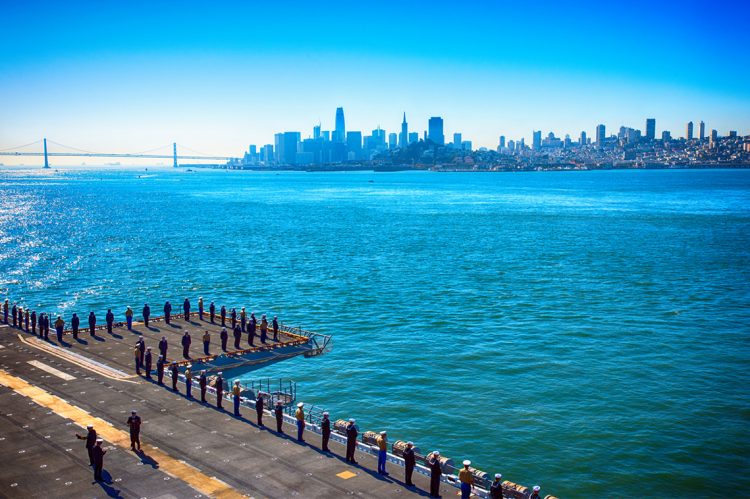Over the weekend, I had the opportunity to check out San Francisco Fleet Week (SFFW), which includes an air show, a parade of ships and even a K9 rescue demonstration. It’s the largest Fleet Week celebration in the country and honors the contributions of the men and women of the United States Armed Forces. SFFW also encourages cooperation and knowledge among civilian- and military-based Humanitarian Assistance Personnel.
Each year since it first began in 1981, SFFW takes place between the Golden Gate Bridge and Alcatraz, and one of the headlining acts is the U.S. Navy Blue Angels. (As a fun fact, it’s also the only U.S. air show with a commercial airliner—the United 777—that performs a fully choreographed act.)
The Blue Angels may be the epitome of teamwork in action. Bill Walsh, the legendary San Francisco 49ers coach, once said, “Champions behave like champions before they are champions.”
And it’s true.
When you’re working in high-pressure situations, with fierce competition, ever-mounting challenges and a whirlwind threatening to slow the speed at which you can achieve your goals, teamwork is the very thing that makes it work. Teamwork allows everyone to stay strong against the tailwinds of unexpected obstacles. Volatility is no match for a team determined to win. (Or as we say, “Teamwork makes the dreamwork.”)
OK, you’re convinced teamwork is the secret sauce to success amid challenges but what then, is the single-most important factor in a high-performing team?
Trust.
Above all else, a team characterized by mutual trust can overcome anything. Think about the Blue Angels. The team members aren’t just in daring situations, they’re in situations where a mistake can make the difference between life and death.
To become a Blue Angel is a feat unto itself. Blue Angels are selected from among the finest of the Navy and Marine Corps. Members are recommended for duty by their current Commanding Officer then individually selected because they meet certain requirements for absolute excellence in skills and professionalism. If accepted, they complete a two- to three-year rotation.
Blue Angels perform in air shows from mid-March to mid-November. During the shows, there are a total of six jets in the air. Blue Angels pilots fly approximately two or three feet apart and travel at speeds from 120 to 700 miles per hour at very low altitude.
There are no digital instruments that ensure the planes stay in position; pilots rely on their hand-eye coordination and advanced skills to keep the fast-moving planes aligned.
The Blue Angels Commanding Officer is called the “Boss,” and the Boss is selected by the Chief of Naval Air training. This pilot must have at least 3,000 tactical jet flight-hours and must have commanded a tactical jet squadron. The Boss flies the No. 1 jet. The Chief of Naval Air Training Selects the “XO,” as well, which is the Blue Angels Executive Officer. A Naval Flight Officer, the XO must have logged at least 1,250 tactical jet flight-hours.
Though they perform from March through November, the Blue Angels spend January through March in training. The Blue Angels pilots fly two practice flights per day for six days a week. They begin at higher altitudes and with more distance between their jets, perfecting their formations before they eventually bring the jets closer together and move to the more dangerous lower altitudes. It’s one of the greatest examples of teamwork in death-defying action. For the Blue Angels, a slight miscalculation or hesitation could be catastrophic. Trust is key for these talented pilots.
So, what’s the message? Author Patrick Lencioni once said: “Not finance. Not strategy. Not technology. It is teamwork that is the ultimate competitive advantage, both because it is so powerful and so rare.” However, the only way teamwork can be achieved is with trust. Without trust, there is no team. With trust, any team—from the Blue Angels to yours—can absolutely soar.
This article is adapted from Blefari’s weekly, company-wide “Thoughts on Leadership” column from HomeServices of America.












